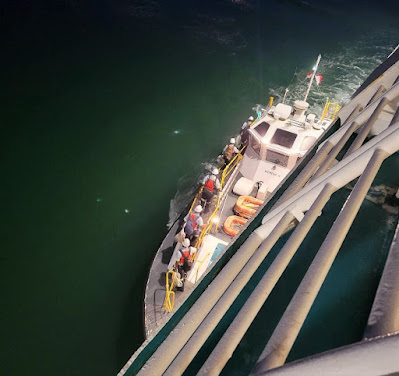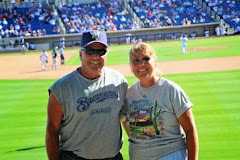I forgot to include a few facts in the Panama Canal Transit post. The cost for our ship to go through the canal was $350,000. The cost for the large cargo ships to cross in the new canal is $1 million. A maximum of 40 ships are allowed to cross per day. The annual amount of ships crossing is about 14,000.
Day 11 brought us to Cartagena, Colombia where we had booked a city tour excursion. When I first saw that this cruise was stopping in Colombia, I was a bit concerned. For years we had heard how the country was infested with drug lords and was very unsafe. Friends who had been in Cartagena on a cruise, encouraged us to take a tour as it was a beautiful city. I'm so glad we did.
Our tour guide was very proud of his city and explained how fifty years ago things were very bad due to drug cartels. He said most of those drug lords are now in prison in the US. He also told us that fifty years ago less than half the children in the country attended school. They have made education a priority since then, and now 95% of children attend school. Their country is flourishing with these changes.
We started our tour with a drive up a steep and narrow road to the La Popa Monastery built in 1612. Here's a view of it up on the hill from our ship.
Here's the outside of the monastery up close. The second picture is the chapel and alter with our tour guide, Benny.
There were many of these fruit carts all throughout the city, sometimes in the road. Mangos sell for a dollar a box. Such a deal.
The traffic was horrific. Our bus driver was a miracle driver. I would never want to drive there. Also, there were motorcycles scooting through between cars like crazy. This was a police car on the pier.
Our next stop was the Castillo San Felipe de Barajas, a fortress built in 1536. At that time the Spanish owned this land. Gold, silver and emeralds had been found, and the Spanish were constantly being attacked by pirates and other privateers. We did not go into the fort, but stopped for some picture taking opportunities.
Cartagena reminded me a lot of Jamaica with venders constantly in your face trying to sell you their stuff. It was also quite hot and humid, so we took a few pictures and got back on the bus.
A statue of General Blas de Lezo is prominent at the fort and throughout the city. He was a Spanish navy officer best remembered for the Battle of Cartagena in 1741 where forces under his command decisively defeated a large British invasion fleet. Throughout his career, the general lost his left leg, left eye, left hand and complete mobility of his right arm. He continued to fight despite all his injuries and died four months after the 1741 battle from typhus.
Throughout the city there are these women dressed in costumes. They will let you take a picture for a price. There is usually fruit in the basket on their head which they will also try to sell you.
Our next stop was the old walled city. This was the original city built in the 1500s. Originally, the coral, limestone and shell wall was over 17 miles long. There are about 5 miles remaining. There are now lots of hotels, restaurants and tourist areas in the old city. Here's a typical square. Lots of bright colored buildings. It has a Caribbean feel to it.
This statue outside the church is of Claver and a slave.
Here's a view of the old city from outside the wall. You can see the church towers.
I enjoyed our tour, but my favorite part of Cartagena was the free bird and animal park at the entrance to the city from the pier. It was kind of a zoo, but the birds, monkeys and sloths were not caged. I think they stay around because they are fed.
There were several red howler monkeys in the trees.
There were some anteaters in a pen. I was surprised how big they were.
This sloth was slowly moving around in the tree.
There were several peacocks around. I've never seen a white one.
There were lots of beautiful parrots and macaws. Wow, were they noisy!!
 |
| Peacocks and parrot up in a tree |
This was our last port of call. My next post will cover the final two days at sea on our way to docking in Tampa, Florida.
Don’t wish upon a star – Reach for one!


























































